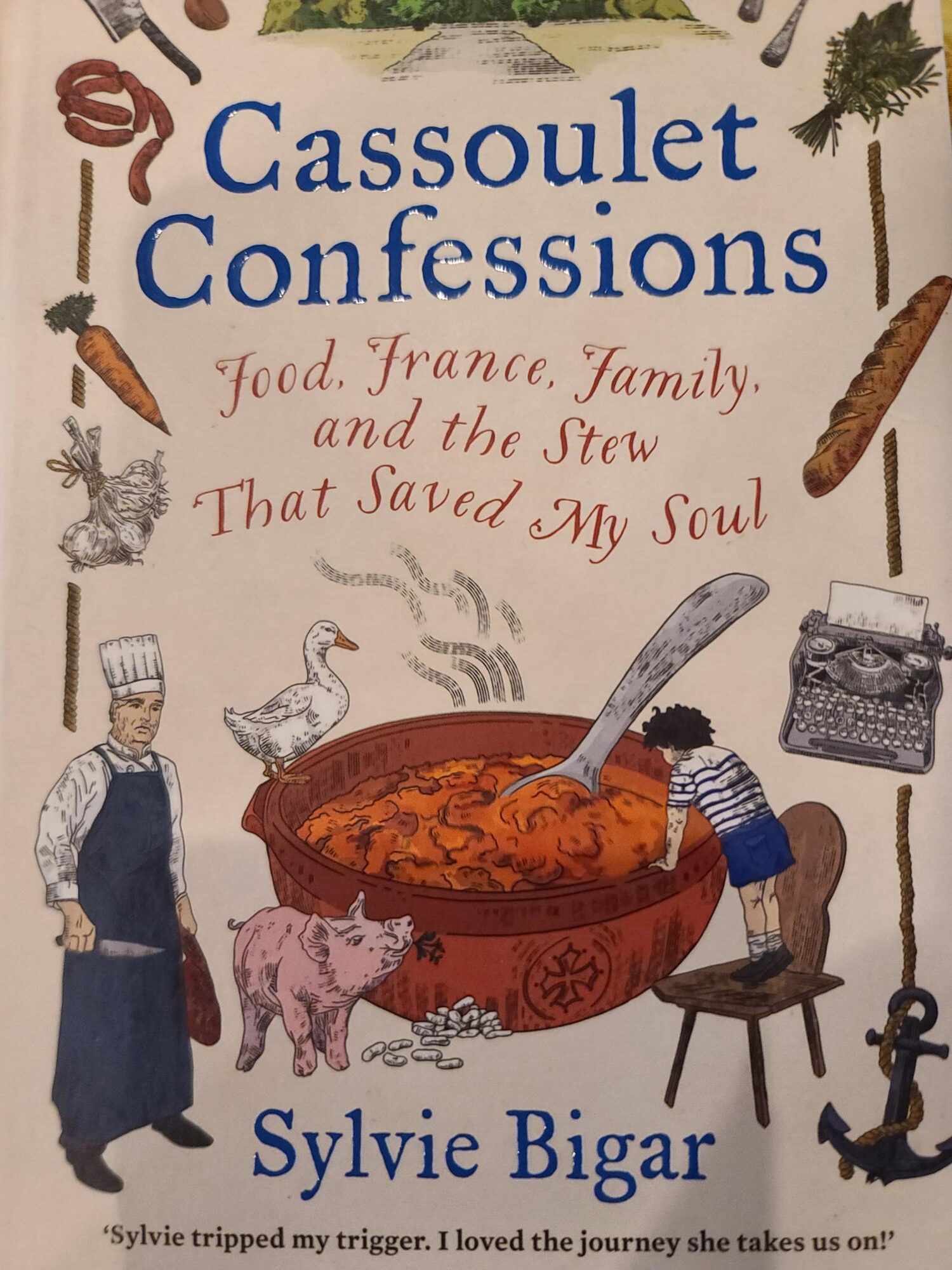A few weeks ago a friend came to visit and gave me a gift – the book “Cassoulet Confessions: Food, France, Family, and the Stew That Saved My Soul”.
Published in 2022, written by food and travel writer Sylvie Bigar, this little 136-page book most likely doesn’t appeal to a broad-based reading audience, but it was the perfect book for me because my friend knew about my obsession with Cassoulet. I couldn’t put this book down.
Making Cassoulet is a metaphor to me for tackling what seem to be simple challenges in life, only to discover how complex a simple challenge can become.
I was first introduced to the dish when I was in my twenties, and subscribed to the Time Life Cook Book Series Foods of the World.
In the volume The Cooking of Provincial France, authored by M.F.K.Fisher,there were 13 pages devoted to Cassoulet. That book introduced me to the historical debates and endless arguments from elite gourmands to village housewives that got me entranced about this “peasant” dish.
Considered to be a simple meal of meat and beans enjoyed in southern France and southwestern Spain, it is anything but simple. It’s origin is a story of how food and community are bound together.
It’s hard to get people excited about a dish of meat and beans. Their attitude is, “what’s the big deal?” But when it is done right, the big deal is epicurean perfection! And that’s why disputes have been kept alive for centuries.
The blending of just the right beans, the right four kinds of meat, the sauce and seasonings, and getting the topping perfect is at the heart of why it takes 3 days to make this meal.
The debates over how to make Cassoulet started in the 16th century and continue to this day. The first dispute is whether to use two different beans or just one. Then, which beans? All recipes specify a large white bean. What is consistent is to always use dry beans that are then soaked, drained, and blanched. Most of my recipes are for two beans, and the two most popular are Fava and Canellini with Great Northern a popular substitute for Fava. But never, ever take a shortcut and use canned beans.
Next is the meats. Cassoulet includes four different meats – duck, sausage, pork, and lamb – each prepared separately with seasonings chosen for that meat. Duck is the most controversial. Some recipes use duck breast. Other recipes require the making of duck confit which uses only the legs of the duck. But there are others that say don’t use duck, use goose meat.
Disputes over sausage abound because sausages vary greatly from country to country and region to region within those countries. The sausage you choose will impact the spiciness and flavor of the Cassoulet more than the other meats.
For the lamb and pork, I buy chops and use the tender center meat from the chops. The most important is to never over-cook it when pre-baking it with seasonings.
Then there are the disputes about seasonings. Cassoulet is a dish rich in seasonings. Seasonings on the meat and even more important, the seasonings in the sauce.
You’ll want plenty of sauce to refresh the liquid during the final cooking of the Cassoulet. I start my sauce by sauteing bacon over low heat with chopped red onion and minced garlic cloves. It is my favorite part of making Cassoulet because I love the smells that fill my kitchen when these ingredients simmer together. Then add the red wine vinegar, red wine, tomatoes, bay leaves, parsley, basil, and oregano, with beef stock as the base.
The topping is the final challenge. It starts with bread crumbs. If they’re too small they’ll soak into the dish and become mushy. If they’re too large, they’ll get too crispy without becoming part of the dish.
So instead of pre-made bread crumbs I use small salad croutons with herb seasoning.
I ate Cassoulet for the first time in the mid 1990s at a business lunch with a client, at the Palm Court of the Plaza Hotel in New York City. Cassoulet was the Chef’s special of the day, made in individual size casseroles. It was divine. Baked to perfection.
In his book Simple French Food, author and chef Richard Olney, a member of the eminent Academie International de Vin, and resident of Provence, says this about Cassoulet . . .
“It is a monument to rustic tradition. All of these separate products are combined in a slow cooking process that intermingles all the flavors until a single new flavor moves into dominance. In cooking, as in all the arts, simplicity is the sign of perfection.”
There really is no other dish like it in the world. I have more than a dozen different recipes for it in the cookbooks on my shelves. About the only consistent thing for each of those recipes is that making a Cassoulet takes time and patience. In a world of take out, food trucks, and in-home delivery, with hectic schedules and demands, who has time to spend three days to prepare one meal?
I have seen it recently on restaurant menus where it is a streamlined version of the dish. Most often made with only two meats – duck and sausage. But if you ever have the chance to order it, even a streamlined version, I hope you will and for that meal you can appreciate the history and disputes of epicurean perfection.
“Cassoulet like life itself is not so simple as it seems.”
Paula Wolfert
If you enjoyed this blog and know someone else who would enjoy it, please share it.

